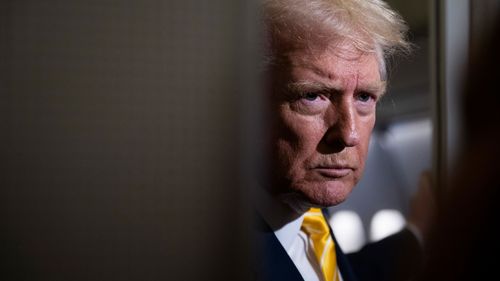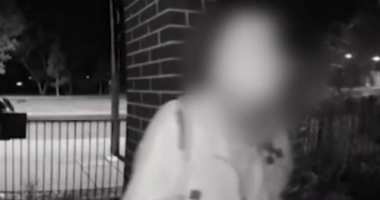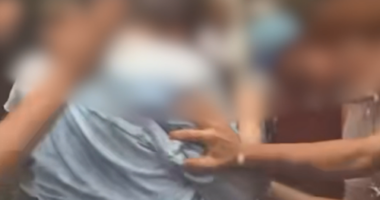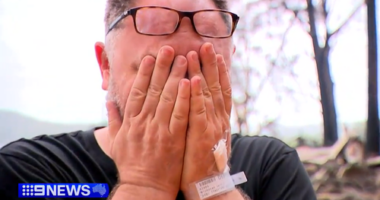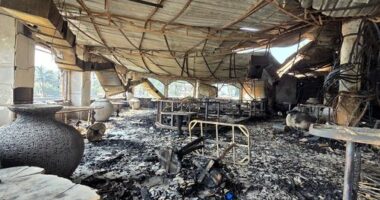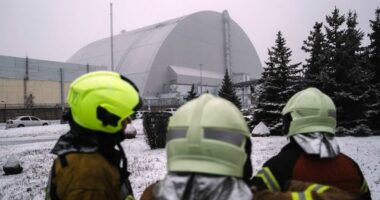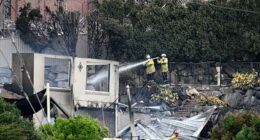Share this @internewscast.com
President Trump was briefed last week on potential military strategies to intervene in Venezuela, according to four sources who spoke to CNN. This comes as he considers the implications of intensifying efforts to potentially remove President Nicolás Maduro from power.
Meanwhile, the U.S. military has positioned over a dozen warships and 15,000 troops in the region as part of a mission called “Operation Southern Spear,” orchestrated by the Pentagon.

On Friday, the president suggested he was nearing a decision on how to address the issues of illegal migration and drug trafficking, along with considering the possibility of a regime change in Venezuela.
Speaking to reporters on Air Force One, Trump said, “I sort of have made up my mind — yeah. I mean, I can’t tell you what it would be, but I sort of have,” when asked about his decision-making process following the briefings.
A select group, including Defense Secretary Pete Hegseth and Chairman of the Joint Chiefs of Staff General Dan Caine, provided Trump with details on Wednesday. A broader national security team, which included Secretary of State Marco Rubio and other senior officials, met with the president in the Situation Room on Thursday, as confirmed by a U.S. official.
During both sessions, Trump and his advisors evaluated various target options.
Trump and his team reviewed target options during both meetings.
Trump has been presented a wide range of options for Venezuela, including air strikes on military or government facilities and drug-trafficking routes, or a more direct attempt to take out Maduro. CNN previously reported that the president was considering plans to target cocaine production facilities and drug-trafficking routes inside Venezuela.

It’s also possible he decides to forgo any action. Trump said last month he had authorised the CIA to operate in the country, but administration officials told lawmakers this month that the US didn’t have a legal justification that would support attacks against any land targets â though it is possible they could generate one.
Trump recently told CBS’ 60 Minutes he was not considering strikes inside Venezuela, despite earlier sounding open to the idea.
The president has, in meetings, seemed wary of ordering actions that could end in failure or put US troops at risk, according to people familiar with the matter.
What assets are in the region?
In recent weeks, the US has amassed its naval forces in the Caribbean as the Trump administration has launched at least 20 strikes on alleged drug-trafficking boats, an effort officials say is meant to disrupt the flow of drugs into the US.
The world’s largest aircraft carrier, the USS Gerald R Ford, arrived in the region last week and entered the Caribbean Sea on Sunday, the Navy announced.
In addition to the aircraft carrier itself â described as the US Navy’s “most lethal combat platform” â the US has amassed roughly 15,000 military personnel in the region, alongside more than a dozen warships, including a cruiser, destroyers, an air and missile defence command ship, amphibious assault vessels, and an attack submarine.
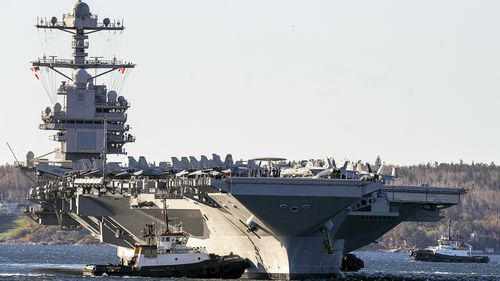
It has also deployed 10 F-35 fighter jets to Puerto Rico, which has become a hub for the US military as part of the increased focus on the Caribbean.
US Army Secretary Dan Driscoll said Sunday that the US military “would be ready, if asked” to take action in Venezuela.
“The president and secretary of war have spent a lot of time thinking about what is the best thing they can do for the American people. And I can speak from the Army’s perspective, which is, we have a lot of training in that part of the world,” Driscoll said on CBS News’ “Face the Nation.”
Experts describe the level of military buildup as significant.

“I have been surprised by both the scale and the speed, and it is unprecedented,” Eric Farnsworth, senior associate at the Center for Strategic and International Studies, told CNN.
“It’s the most significant build up this century. In fact, you have to go back to 1989, the US invasion of Panama, for anything remotely similar.”
Venezuela, in turn, has said it is launching a “massive mobilisation” of military personnel, weapons and equipment.
Potential risks and rewards
Regime change in Venezuela would require serious commitment by the US and carries high risk, but ousting Maduro could give Trump and his team credit for something that has proved elusive to multiple US administrations, including his own.
During his first term in office, Trump officially recognised Venezuelan opposition leader Juan Guaidó as the country’s legitimate leader, but a failed coup attempt in 2019 meant Guaidó never managed to take power.
If Trump ousted Maduro, the US president could claim major wins: getting a strongman out and an elected leader in, the possibility of enhanced collaboration on flows of drugs and migration, and potential deals on oil.
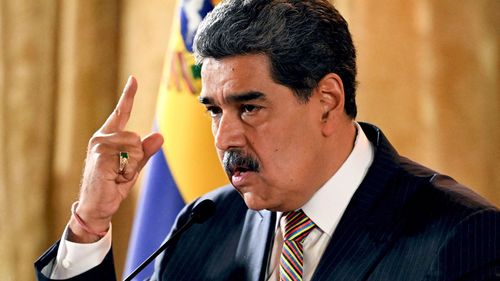
But experts have also warned that if Trump ordered strikes inside Venezuela aimed at ousting Maduro, the US president could face serious challenges with fractured opposition elements and a military poised for insurgency.
In remarks from Caracas on Friday, Maduro warned that US military intervention could lay the groundwork for what he described as “another Gaza,” a “new Afghanistan” or “Vietnam again.”
Offering a direct message to the US, he said, “Stop the insane hand of those who order bombing, killing and bringing war to South America, to the Caribbean. Stop the war. No to war.”
Extended US military involvement also runs the risk of upsetting the political coalition that propelled Trump into office on promises of keeping America out of overseas wars. Both Vice President JD Vance and Hegseth served in the military during the Iraq War and have since expressed scepticism about entangling the US in foreign conflicts.
“The American people did not vote for Trump to draw the US into a sustained conflict in Latin America. On that basis securing Trump’s commitment to long-lasting support for the opposition is likely to be a challenge,” said a GOP congressional staffer.
“And without that support, this won’t work.”
